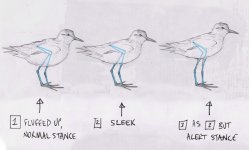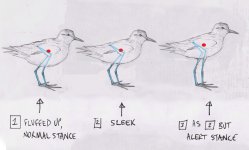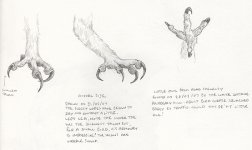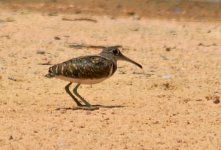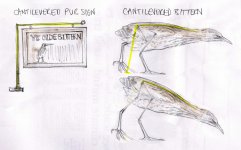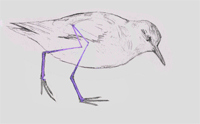Strandman
Well-known member
Beth - thought I'd best reply on this 'anatomy' thread.
I'm not au fait with the specific problems you 3-D ers suffer regarding balancing birds, but I would have thought that to make a quick sketch of your model and then work out the balancing point as on the sketch sheet ought to help to find the right 'feel' for the bird.
The sketches show a very basic idea that if the mass of the bird can be simplified and a line drawn through the virtual centre - then the feet ought to be along that axis (although there are other issues which can get in the way of such a simple theory).
Comments anyone?
It's a good method..I couldn't resist sticking proper toes on the stinty thing following Dave B's comments and sure enough the feet are a bit too far forward on the bird. So second pic shows them taken back a bit with a red splot where (to my way of thinking) centre of body mass lies. This is on the basis that the rear third of a bird isn't really mass at all - all primaries and tail and no meat n bone.




